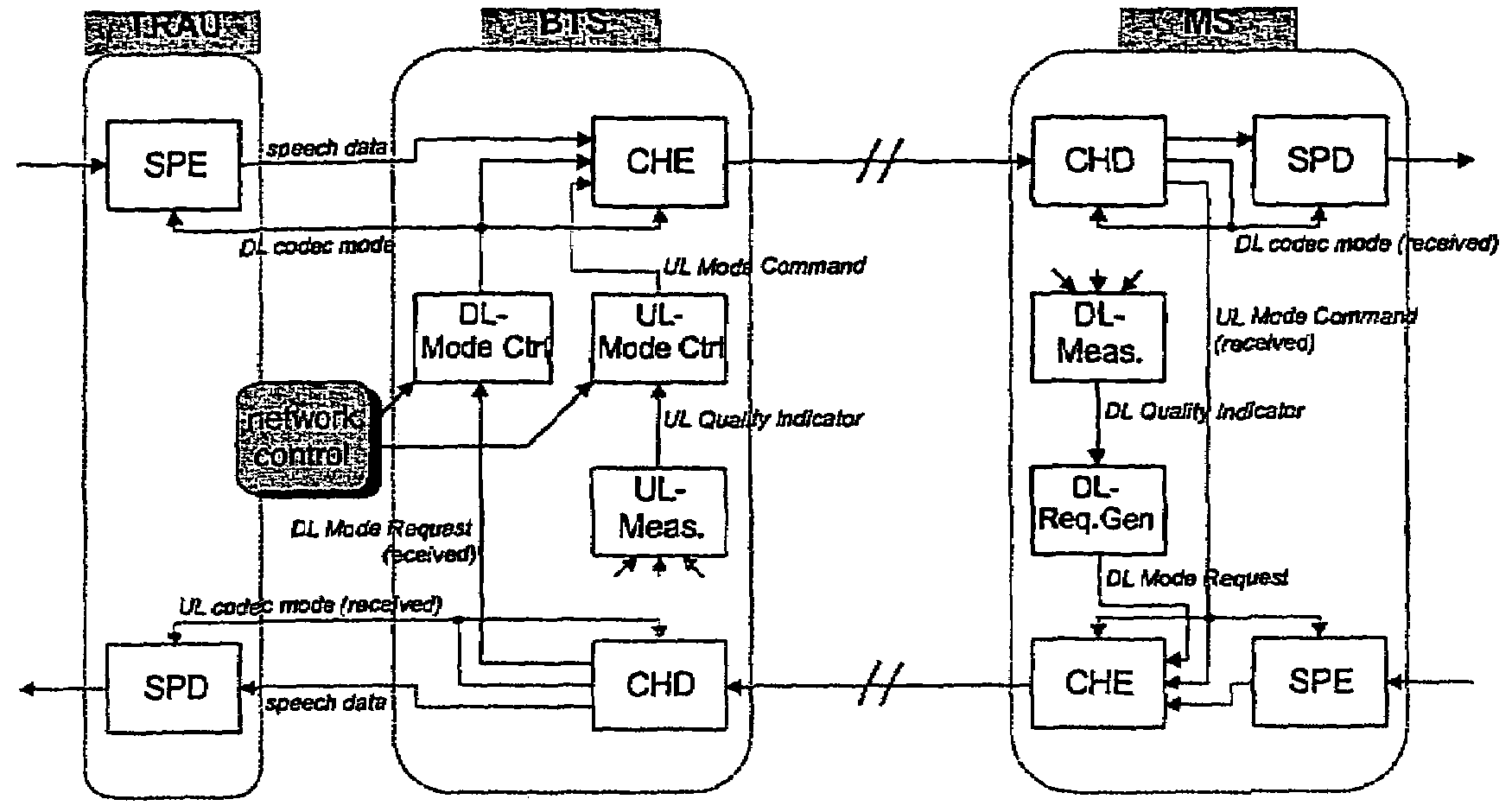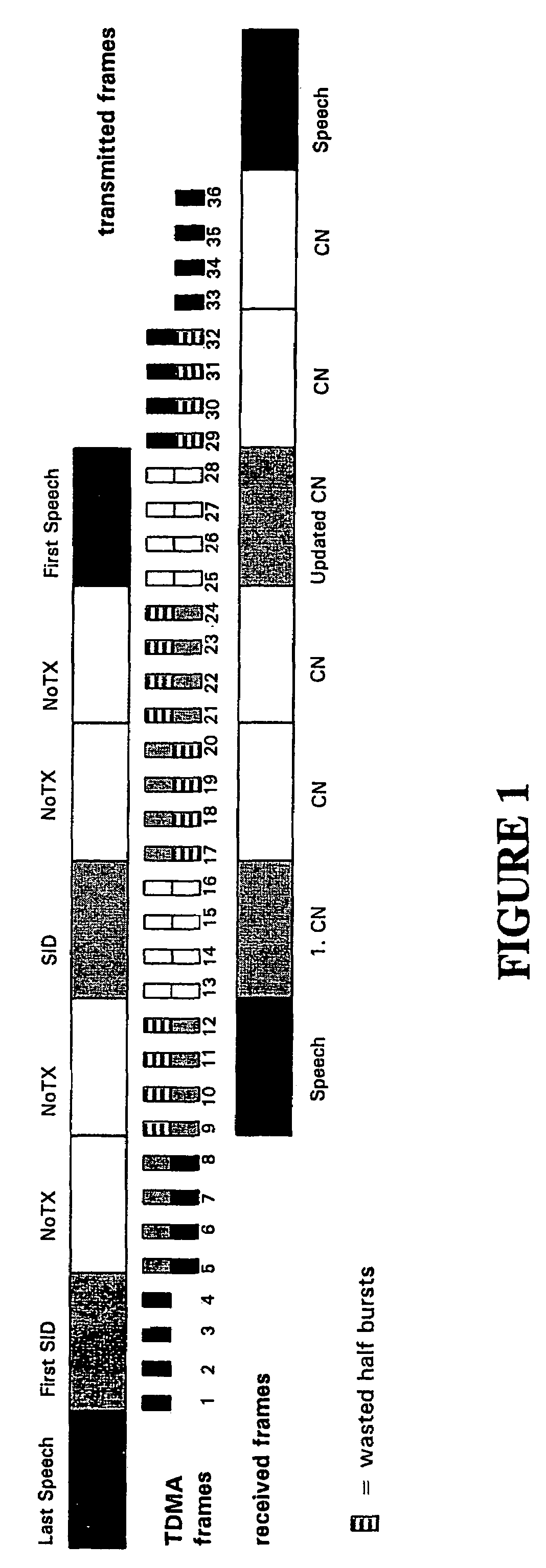Efficient in-band signaling for discontinuous transmission and configuration changes in adaptive multi-rate communications systems
a communication system and discontinuous transmission technology, applied in the field of communication systems, can solve the problems of low degree of error protection, limited transmission capacity, and inability to use multi-mode coding systems, and achieve the above described conventional dtx solutions, realized in gsm fr, efr, and hr, to achieve the effect of reducing the number of channels
- Summary
- Abstract
- Description
- Claims
- Application Information
AI Technical Summary
Problems solved by technology
Method used
Image
Examples
Embodiment Construction
[0047]Although embodiments of the invention are described hereinafter with respect to speech transmission in the GSM system, those of skill in the art will immediately appreciate that the disclosed techniques are equally applicable in other contexts. For example, the invention is readily applied in any wireless or fixed-line communication system, including TDMA systems (e.g., D-AMPS), PDC, IS95, and the Internet.
[0048]FIG. 3 depicts an exemplary AMR system in which the techniques of the present invention can be implemented. The exemplary AMR system includes a Transcoding and Rate Adaption Unit (TRAU) and a Base Station (BTS) on the network side, as well as a Mobile Station (MS). On the network side, a speech encoder (SPE) and a channel encoder (CHE), as well as a channel decoder (CHD) and a speech decoder (SPD), are connected via the well known serial A-bis interface. For each link, quality information is derived by estimating the current channel state. Based on the channel state, a...
PUM
 Login to View More
Login to View More Abstract
Description
Claims
Application Information
 Login to View More
Login to View More - R&D
- Intellectual Property
- Life Sciences
- Materials
- Tech Scout
- Unparalleled Data Quality
- Higher Quality Content
- 60% Fewer Hallucinations
Browse by: Latest US Patents, China's latest patents, Technical Efficacy Thesaurus, Application Domain, Technology Topic, Popular Technical Reports.
© 2025 PatSnap. All rights reserved.Legal|Privacy policy|Modern Slavery Act Transparency Statement|Sitemap|About US| Contact US: help@patsnap.com



